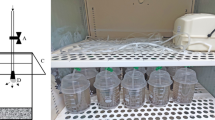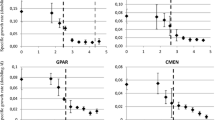Abstract
In Australia, water-quality trigger values for toxicants are derived using protective concentration values based on species-sensitivity distribution (SSD) curves. SSD curves are generally derived from laboratory data with an emphasis on using local or site-specific data. In this study, Australian and non-Australian laboratory-species based SSD curves were compared and the concept of species protection confirmed by comparison of laboratory-based SSD curves with local mesocosm experiments and field monitoring data. Acute LC50 data for the organochlorine pesticide endosulfan were used for these comparisons; SSD curves were fitted using the Burr type III distribution. SSD curves indicated that the sensitivities of Australian fish and arthropods were not significantly different from those of corresponding non-Australian taxa. Arthropod taxa in the mesocosm were less sensitive than taxa in laboratory tests, which suggests that laboratory-generated single-species data may be used to predict concentrations protective of semifield (mesocosm) systems. SSDs based on laboratory data were also protective of field populations.
Similar content being viewed by others
Author information
Authors and Affiliations
Rights and permissions
About this article
Cite this article
Hose, ., Van den Brink, . Confirming the Species-Sensitivity Distribution Concept for Endosulfan Using Laboratory, Mesocosm, and Field Data. Arch Environ Contam Toxicol 47, 511–520 (2004). https://doi.org/10.1007/s00244-003-3212-5
Issue Date:
DOI: https://doi.org/10.1007/s00244-003-3212-5




